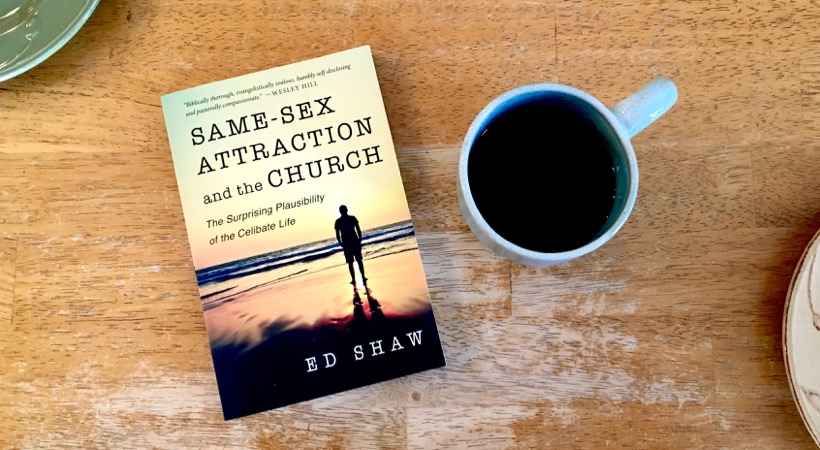I’m pro-marriage. Coming from someone who’s been single for 33 years, that might sound a bit weird, but it’s true! I’m passionate about marriage because I’ve learned, through the teaching of the Bible and the wise men who expound it, the real meaning of marriage: it’s a metaphor for Christ and his people. A living picture of the gospel. That’s something to get excited about! But sadly, it’s also something many people have forgotten — not only in the world, but also in the Church. We’ve dwindled marriage down to companionship, lovemaking, and childrearing. Of course, marriage is all of those things, but it MEANS so much more. God designed it and gave it to mankind as the most vivid way to proclaim the gospel and live out its principles.
Ray Ortlund wrote Marriage and the Mystery of the Gospel in hopes of recovering “joyful confidence in marriage as God originally gave it to us.” Although this book can be read in one sitting, it’s not “theology lite.” Ortlund’s writing is serious and poetic, with tightly packed truths that demand our attention. The book is divided into four sections that paint a sweeping portrait of marriage from Genesis to Revelation.
Marriage in Genesis
The first book of the Bible reveals both “the glory of marriage and the brokenness of marriage.” Eden was the scene of the world’s first wedding, where the crown jewels of God’s creation became “one flesh.” Ortlund spends a good chunk of time talking about the beauty of complementarity, which is not only a major theme in the creation account, but also a necessity in marriage. Knowing our modern sensibilities when it comes to gender issues, Ortlund wants us to recognize and rediscover the “stroke of divine genius” in God’s design for husband as head and wife as helper — the framework for marriage that remains to this day. He also stresses how the fall in Genesis 3 wrecked the dynamics of this first marriage (and all marriages after it) with man seeking to dominate his wife, and woman seeking to subvert her husband. But Genesis 3 also comes with a promise of restoration, not only between sinners and God, but also between husbands and wives.
Marriage in the Law, Wisdom, and Prophets
Ortlund first discusses how the Mosaic Law sought to repair the damage done to marriage after the fall. Some of the laws that seem odd or downright unethical to modern readers (think levirate marriage) were actually quite civilized, especially compared to other Near Eastern cultures. He’s also quick to note that stories of polygamy and other deviations of marriage in the Bible are descriptive, not prescriptive; the original design of marriage still stood, even when God’s people got it wrong. But despite the struggles that come with marriage post-fall, the biblical writers want us to remember its original glory. Proverbs and the Song of Solomon celebrate marital love and sex, and offer warnings to protect marriage from sexual sin, which further proves how important the metaphor is to God. Ortlund then touches on the prophets, where the true meaning of marriage begins to unfold. Isaiah, Jeremiah, Ezekiel, and Hosea “retell the whole of Israel’s history in a new way — as a tragic romance,” with God as loyal husband and Israel as unfaithful bride. Human marriage points us to a “super-reality,” as Ortlund says; that is, God’s faithfulness to his people, and his resolve to see this divine marriage through to eternity.
Marriage in the New Testament
Enter Jesus, our bridegroom. Seeing as he’s the ultimate reality to which all marriages point, what did he think about marriage? When asked about divorce, Jesus went retro, reaching back to Eden to affirm the original design of marriage: “Therefore a man shall leave his father and his mother and hold fast to his wife, and they shall become one flesh” (Genesis 2:24). Although Jesus fulfilled the law, eliminating civil and ceremonial customs, one thing that remained unchanged is marriage: one man, one woman, for life. The apostle Paul, too, used Genesis 2:24 as the standard for marriage: once in 1 Corinthians 6:16, and more famously in Ephesians 5 (a passage often recited at weddings), where he explains how marriage reflects Christ and the Church. Paul reiterates the “dance of complementarity,” as Ortlund calls it, between husband as head and wife as helper that was first established in Genesis. Finally, Ortlund takes us to Revelation, where the institute of human marriage comes to an end and the better reality to which it pointed all along begins: the marriage supper of the Lamb, where Christ and his people are united forever. Ortlund notes that God made the heavens and earth for the marriage of Adam and Eve, but he will soon make a new heaven and new earth for the ultimate marriage of Jesus and his bride, the Church.
Marriage in the World Today
Ortlund ends with a sober reminder from Scripture: “Let marriage be held in honor among all” (Hebrews 13:4). Especially now, in a culture where people “don’t believe in marriage” or seek to redefine it, we need to “build a pro-marriage counterculture, where faithfulness and beauty and lasting love point the way not only to a better human society but also, and far more, to the eternal love of Christ.” Because the one-flesh union of man and woman is such a vital and vivid representation of the gospel, Christians have every reason to protect marriage, both their own and in general. Every departure from God’s design for marriage is a departure from the gospel; thus, Ortlund encourages Christians to defend God’s vision for marriage and sexuality with confidence and humility.
If I may have the final word: Marriage is not the gospel, but it is God’s chosen metaphor for the gospel, a motif that runs through the veins of Scripture from the very heart of God, giving us insight to his fierce love and devotion toward his people. That’s why I love marriage! And that’s why I recommend this book. I hope it will encourage married couples to take seriously their role in displaying God’s love to the world, and inspire single people to cherish marriage, knowing it holds the mystery of the gospel for them as well.








